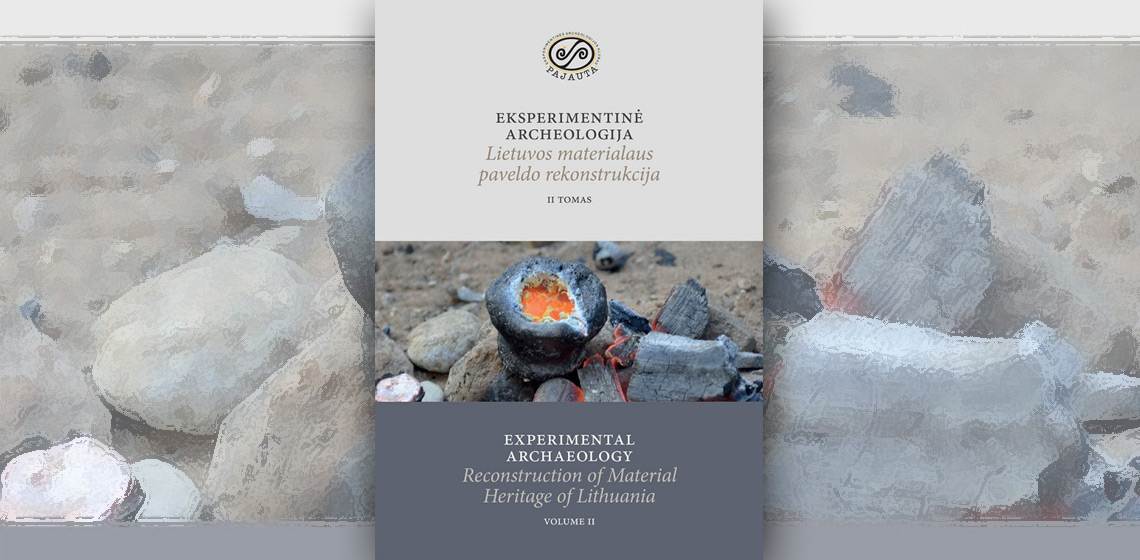The content is published under a Creative Commons Attribution Non-Commercial 4.0 License.
Unreviewed Mixed Matters Article:
Book Review: Experimental Archaeology: Reconstruction of Material Heritage of Lithuania, Volume II by Daiva Luchtaniene (ed)

Experimental Archaeology: Reconstruction of Material Heritage of Lithuania, Volume II, is an interesting journey back into the past by means of practical experimentations. An insightful volume that contains a collection of well-written and well-crafted essays exploring different facets of ancient life in Lithuania – such as flint tool manufacturing, leatherwork intricacies or colouring dye on clothes. There are some portions of the English translation which may need further editorial reviews.
The clarity and coherence of the essays are a fresh feature in this book. Each contribution has been written well with clear, detailed explanations of experimental processes conducted by the researchers. There is a lot to learn from these essays whether it is about the ancient lithic technology revival or exploring traditional dyeing methods. Readership levels go beyond the scholar to also target other interested parties who would enjoy this information for diverse reasons.
One of the strong points of this book is its attentiveness to details and thoroughness. Many of the essays include conclusions or summaries, giving insights into the importance of the findings of these experiments, thus enabling readers to have a general understanding of the main discoveries as well as implications in every experiment. Moreover, having a full list of references provided makes it possible for readers to have access to additional scholarly research in that area.
Another thing that adds to the usefulness of this book is the use of visual aids to include charts and graphs. These well-done images accompany the content given in a text but also give a reader more clarity into the whole experimental data. This means that, among other things, such visual aids as natural dyes for fabrics or properties of brogues have a lot to do with transmitting difficult information clearly. The inclusion of pictures depicting original finds and their reconstructions is both informative and exciting.
Moreover, the section providing author bios brings an extra layer of depth to the book. For instance, it helps readers understand different viewpoints that are associated with the essays by giving a feel of the contributors’ background and knowledge areas. This will also help to create an understanding on how research in this area requires collective effort and how they work together ensuring this field progresses forward but also emphasizes why experimental archaeology is multi-disciplinary.
The book focuses mainly on Lithuanian archaeology, yet the insights and methodologies brought forward are universal. The extensive essays presented here delve into various subjects complemented by a detailed list of references and visually appealing exhibits, making this publication invaluable for those who are interested in finding out more about how archaeology, experimentation, and cultural heritage intersect. Regardless of the area being analysed, experts and enthusiasts interested in experimental archaeology will gain from the variety of topics addressed in this book. As stated in the Preface, if you are interested, “try to think, accept, reject, discuss, engage in the experiment yourself.” You can also, “safely use the data provided here.”
In conclusion, Experimental Archaeology: Reconstruction of Material Heritage of Lithuania, Volume II, is a commendable addition to the field of experimental archaeology. Through the well-written essays, comprehensive conclusions, and use of visual aids, the volume offers a compelling exploration of ancient Lithuanian life. Whether you're a seasoned archaeologist or a curious enthusiast, this volume provides a variety topics and insights that will help enrich your understanding of the past.
Book information:
Daiva Luchtanienė (editor), 2017. Experimental Archaeology: Reconstruction of Material Heritage of Lithuania, Volume II, Eksperimentinė archeologija. Lietuvos materialaus paveldo rekonstrukcija, II Tomas, Vilnius: Eksperimentinės Archeologijos Klubas “Pajauta”, Akademinė Leidyba, ISBN 978-9955-33-727-0, 240 pp.
Country
- Lithuania

